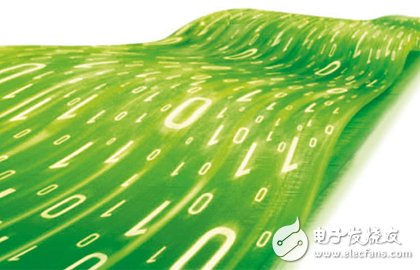Information and communication technology has been fully developed in the early 21st century. Even refrigerators and televisions have started to connect (M2M networking), but from another perspective, full development means that it is about to end. In fact, the industry generally believes that it is now at the end of the fifth revolution and the next technological revolution is about to unfold. For the next scientific and technological revolution that will lead the progress of the times, everyone's views are not unified. Nanotechnology, biotechnology, or new technological innovations around energy are candidates. Of course, energy technology has attracted the most attention in the industry. After all, this involves environmental protection and is related to the sustainable survival of humankind.

Green Communication (Green CommunicaTIon)
ICT is the key core of the last scientific and technological revolution, and it is also the key to reducing energy consumption and practicing an environmentally friendly world. The simplest example is that tablets replace paper and reduce Kimura logging; video conferencing replaces face-to-face meetings to reduce transportation costs.
But for developers, the most worrying thing is: invented a technology that can reduce costs, but the cost of implementing this technology is far higher than the cost savings. At present, mobile phones are already popular in the world, and wireless networks are almost everywhere. Does this cause a greater waste of energy?
According to the report, in the next few years, the annual carbon emissions of wireless communications will grow at a rate of three times. One third of the total carbon emissions.
For system operators, this is very bad news. Because, as early as 2006, energy costs had already eaten up to 1% of the pre-interest and tax profits of telecom operators. This is also the key reason for the "green communication" in the field of information and communication in the past few years.
Green communication camp
In 2010, the EU proposed a three-year "Earth Plan" (EARTH, energy aware radio and network technology) with the goal of doubling the energy consumption of wireless communication technology. In the same year, another alliance, Green touch, was born. Their goal was more ambitious, and they planned to increase energy efficiency by a factor of 1,000 within five years. Judging from the current situation, Green touch is making good progress and its implementation effect is much better than EARTH.
It is worth noting that many Chinese companies can be seen in the Green touch alliance. The core members include China Mobile and Huawei Technologies. The excellent performance of these companies is a metaphor for the progress of China's communications technology, which may be much faster than the industry expected.
Around green communication, many new technologies are developing, expressed in an English proverb, "One method does not fit all." Here are a few more important green communication technology introductions for everyone:
1. Heterogeneous network (HetNet)
Heterogeneous networks are the core technology of LTE next-generation LTE-Advanced (LTE-A). The traditional base station adopts a single specification. In order to serve more remote areas or in urban areas with high density, it is often necessary to increase the system power. Heterogeneous networks are designed to solve this problem. They use smaller micro base stations (micro base staTIon) and even smaller pico base stations (pico base staTIon).
When a heterogeneous network is used, where the user density is high, the energy use efficiency will increase from 1 Joule transmission of 141 bits to 566 bits, the efficiency is more than four times.
2. Multi-standard energy management (MulTIradio power management)
For the same reason, not only base stations should be distinguished from one another in size, but wireless communications also have different sizes. In fact, this has been reflected in related technologies, such as Bluetooth, WiFi, 3G, etc. The concept of multi-standard energy management is like the WiFi working status management function of a smart phone, which can automatically switch to different standards according to user needs.
The technology is the same, but the purpose is different. The traditional WiFi working state management function is to reduce the load of 3G, while the multi-standard energy management is to reduce energy consumption. There is a sentence in the document describing the multi-standard energy management technology:
"We often encounter users who are advised to 'turn off Bluetooth and WiFi', and even 'try to use GSM networks instead of 3G networks' to improve battery life. Of course, doing so will turn a multifunctional smartphone into an old-fashioned 2G Mobile terminal."
Therefore, technology is not always moving forward. Engineers can occasionally look back at obsolete technologies, perhaps discovering the advantages that cannot be replaced.
Ningbo Autrends International Trade Co.,Ltd. , https://www.ecigarettevapepods.com